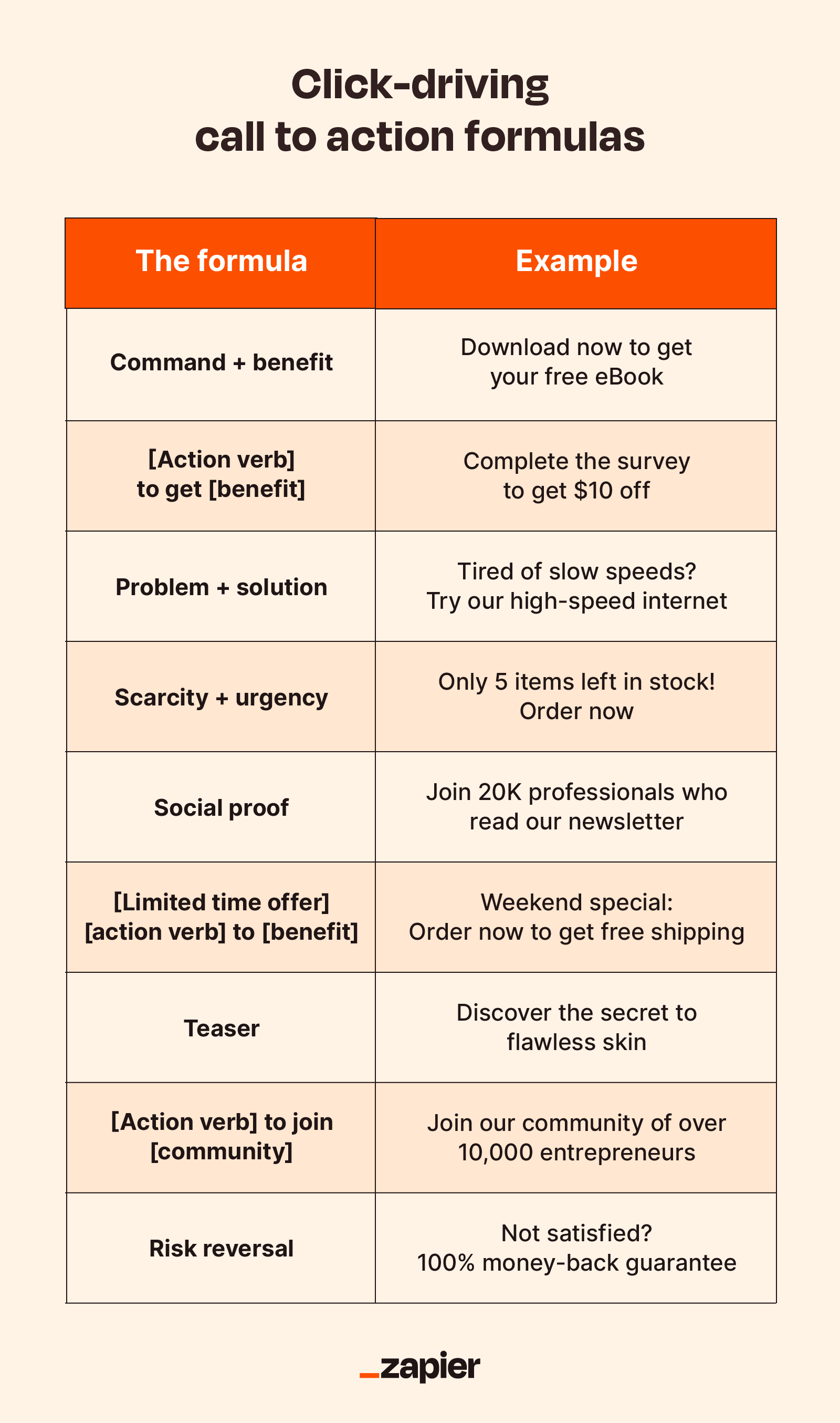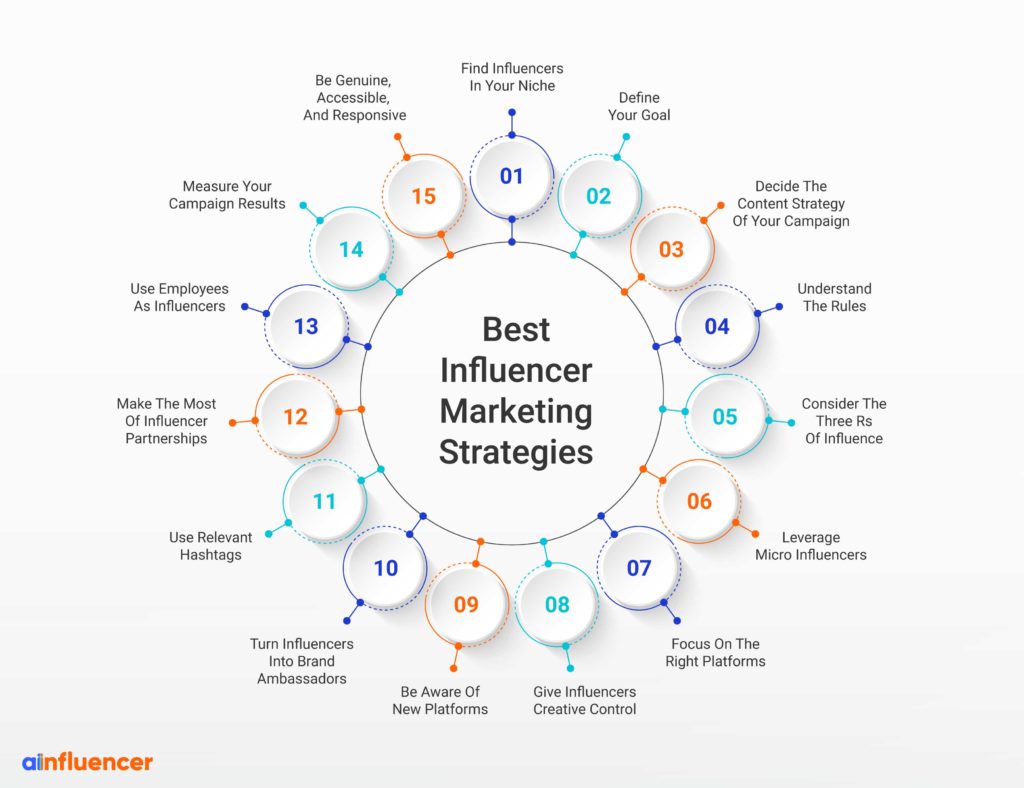You spent countless hours researching, writing, editing, and optimizing, all with the hopes of driving real results for your business. But despite your best efforts, your content just isn't hitting the mark. Traffic is stagnant, engagement is low, and conversions are nowhere to be found. What gives?
First off, let me just say: you're not alone. As a marketing consultant who's worked with countless businesses over the years, I've seen this story play out time and time again. It's a frustrating and demoralizing experience, but the good news is that there's hope. With the right strategies and tactics, you can turn your underperforming content into a powerhouse that drives real business results.
In this post, I'm going to share with you the exact framework and techniques I've used to help my clients transform their content and achieve their goals. We'll dive into the nitty-gritty of content audits, optimization, repurposing, promotion, and iteration. I'll share real-world examples and case studies to illustrate what works and what doesn't. By the end of this post, you'll have a clear roadmap to content success that you can start implementing right away. Sound good? Let's dive in.

Why Content Fails to Deliver Results
Before we jump into solutions, it's important to understand the common reasons why content falls flat. Here are a few key culprits I've seen time and again:
Misalignment with audience needs and business goals. Too often, content is created without a clear understanding of what target audiences actually want and need, or how it supports overarching business objectives. This leads to content that is irrelevant, unfocused, or fails to drive meaningful actions.
Poor discoverability and distribution. You could have the best content in the world, but if your target audience can't find it, it's not going to perform. Common issues include suboptimal SEO, lack of effective promotion, and failure to invest in the right distribution channels.
Lack of engagement and value. Even if people do find your content, they won't stick around or take action if it doesn't capture their attention and provide substantial value. Thin, generic, or poorly produced content is a surefire way to lose your audience.
Inconsistency and lack of strategic direction. Many businesses take a scattershot approach to content creation, with no clear strategy or process in place. This leads to inconsistent quality, messaging, and results.
Now that we've identified the key pitfalls, let's dive into how to fix them.
Step 1: Audit and Evaluate Your Content Performance

The first step to improving your content's performance is to take stock of what you have and how it's currently doing. This involves a comprehensive audit and evaluation process:
- Inventory your content assets. Create a centralized list of all your existing content pieces, including blog posts, articles, videos, infographics, whitepapers, etc.
- Analyze performance metrics. Use analytics tools (e.g. Google Analytics) to gather data on key performance indicators (KPIs) for each piece of content, such as:
- Traffic and engagement (page views, time on page, bounce rate)
- SEO metrics (rankings, organic traffic, backlinks)
- Conversions and revenue attribution
- Social shares and mentions
- Gather user feedback. Supplement quantitative data with qualitative insights from your target audience. Conduct surveys, interviews, or focus groups to understand their perceptions, needs, and pain points around your content.
- Evaluate content quality and relevance. Critically assess each piece of content in terms of its substance, clarity, value to the reader, and alignment with your brand and business goals. Look for opportunities to improve.
- Identify top performers and underperformers. Based on the data and insights gathered, segment your content into pieces that are doing well versus those that are falling short. This will help prioritize your optimization efforts.
Here's an example of how a SaaS company might approach this process:
| Content Piece | Page Views | Avg. Time on Page | Conversions | Feedback | Action |
|---|---|---|---|---|---|
| Blog Post A | 10,000 | 2:30 | 50 | High relevance and value, but dated information | Update and re-promote |
| Whitepaper B | 500 | 1:15 | 5 | Low awareness and engagement, not promoted effectively | Rework into blog series, improve SEO and distribution |
| Video C | 50,000 | 4:50 | 1,000 | High viewer retention and social shares | Use format and topic for future content |
Through this audit process, the company identified key strengths and weaknesses in their content portfolio, and developed a prioritized action plan.
Step 2: Identify Content Gaps and Opportunities

With a clear picture of your existing content's performance, the next step is to identify gaps and opportunities for improvement and expansion. This involves aligning your content with your audience's needs and your business goals at each stage of the buyer's journey.
Map content to the buyer's journey. Evaluate how well your current content addresses your target audience's needs and questions at each stage of their journey, from awareness to consideration to decision. Look for gaps where additional or different content could better support their progress.
Example buyer's journey content map:
| Awareness | Consideration | Decision |
|---|---|---|
| Blog posts addressing common challenges | Whitepapers comparing solution options | Case studies showcasing successful implementations |
| Social media posts highlighting industry trends | Webinars demonstrating product features and benefits | Free trial or demo offer |
| Infographics illustrating key statistics | Testimonials and reviews from current customers | ROI calculator or personalized quote |
Conduct keyword research. Use SEO tools (e.g. SEMrush, Ahrefs) to identify high-value keywords and topics that your target audience is searching for, and evaluate how well your existing content addresses them. Look for opportunities to create new content around untapped keywords or to optimize existing content for better rankings.
Analyze competitor content. Look at the content your competitors are creating to identify potential gaps or areas where you could differentiate yourself. Don't just copy what they're doing, but use it as inspiration to create even better, more valuable content.
Gather audience feedback and insights. Engage directly with your target audience to understand their content needs and preferences. Conduct surveys, interviews, or social media listening to uncover key topics, formats, and channels where you could better reach and engage them.
By taking a strategic, audience-centric approach to content planning, you can ensure that every piece of content you create is purposeful, relevant, and aligned with your business goals.
Step 3: Optimize Existing Content for Better Performance
Once you've identified your top-performing and underperforming content pieces, as well as gaps and opportunities for new content, it's time to start optimizing. Here are some key tactics:
Refresh and update outdated content. For pieces that are still relevant and valuable but may contain outdated information or references, make the necessary updates to keep them fresh and accurate. This can also give you an SEO boost and drive new traffic.
Improve SEO and discoverability. For underperforming content, look for opportunities to optimize titles, meta descriptions, headers, and body content for target keywords. Ensure that each piece is properly tagged and categorized, and that it earns high-quality backlinks from reputable sources.
| On-Page SEO Factor | Best Practices |
|---|---|
| Title Tag | Include primary keyword, limit to 60 characters |
| Meta Description | Include primary and secondary keywords, limit to 160 characters, use action-oriented language |
| Header Tags | Use H1 for main title, H2 for subheadings, include keywords naturally |
| Image Alt Text | Describe image content, include keywords, limit to 125 characters |
| Internal Linking | Link to relevant pages on your site using descriptive anchor text |
Enhance content format and organization. Look for ways to make your content more engaging, scannable, and easy to consume. This may involve adding visual elements like images, videos, or infographics; breaking up long blocks of text with subheadings and bullets; or restructuring the content to better flow and guide the reader.

Add calls-to-action (CTAs) and conversion opportunities. Every piece of content should have a clear purpose and desired action for the reader. Make sure to include relevant, compelling CTAs to drive conversions, whether that's subscribing to your blog, downloading a whitepaper, requesting a demo, or making a purchase.
A real-world example of content optimization in action:
A software company had an old blog post that was generating a steady stream of organic traffic but had a high bounce rate and low conversion rate. Upon review, they discovered that the post contained outdated information and lacked a clear CTA.
To optimize the post, they:
- Updated the content with current information and screenshots
- Improved the post's structure with clearer subheadings and bullet points
- Added a relevant, eye-catching featured image
- Included an embedded video demo of the software
- Optimized the title and meta description for target keywords
- Added a prominent CTA to download a free trial at the end of the post
As a result of these optimizations, the post's bounce rate decreased by 30%, average time on page increased by 50%, and conversions from the post tripled.
Step 4: Repurpose and Refresh Underperforming Content

Sometimes, despite your best optimization efforts, certain pieces of content simply fail to gain traction. But that doesn't mean they're a lost cause. Repurposing and refreshing underperforming content into new formats can give it new life and reach new audiences.
Here are some ideas:
Turn a series of blog posts into an ebook or whitepaper. If you have a collection of related blog posts that didn't perform well individually, consider combining and expanding them into a more comprehensive, value-packed resource.
| Original Content | Repurposed Format | Benefits |
|---|---|---|
| Blog Post Series | Ebook | Longer shelf life, Lead generation, SEO value |
| Webinar Recording | Video Course | Evergreen content, High engagement, Gated access |
| Data Report | Infographic | Visual appeal, Social shareability, Backlink potential |
| Customer Interview | Case Study | Social proof, Sales enablement, Thought leadership |
Convert a whitepaper into a webinar or video series. Take the key insights and lessons from a whitepaper and turn them into an engaging webinar or series of short videos that are easier for busy audiences to consume.
Break a long-form article into a series of social media posts. Extract the most important tips or quotes from an article and turn them into eye-catching social media graphics or posts that drive traffic back to the full piece.
Repackage data or research into an infographic. If you have a content piece that's heavy on data or statistics, consider visualizing that information in a more shareable, engaging format like an infographic.
A case study of successful content repurposing:
A marketing agency had published an in-depth guide to social media marketing that initially gained some traction but then fizzled out. Rather than let it gather dust, they decided to repurpose the guide into multiple new formats:
- They broke the guide down into a series of shorter blog posts, each focusing on a specific social media platform or tactic
- They created a webinar that walked through the key strategies and examples from the guide, and promoted it to their email list and social media followers
- They turned the guide's data and insights into a series of infographics and social media posts, which they used to drive traffic back to the full guide
As a result of this repurposing strategy, the agency was able to reach new audiences, drive fresh traffic to the original guide, and generate new leads and customers from the content.
Step 5: Improve Content Distribution and Promotion
Creating great content is only half the battle. To truly maximize its impact, you need to get it in front of the right people through targeted distribution and promotion. Here are some strategies to consider:
Make use of email marketing. Share your latest content pieces with your email subscribers, and use segmentation to ensure that each piece reaches the most relevant and engaged audience.
Promote on social media. Share your content on the social media platforms where your target audience is most active, and use paid promotion to expand your reach. Engage with your followers and encourage them to share your content with their own networks.

Collaborate with influencers and thought leaders. Identify influencers and thought leaders in your industry who have a engaged following that overlaps with your target audience. Reach out to them to explore opportunities for content collaboration, guest posting, or cross-promotion.
Utilize content syndication and guest posting. Republish your content on high-authority sites and publications in your industry to reach new audiences and drive traffic back to your site. Contribute original guest posts to these sites to build your brand's thought leadership and earn high-quality backlinks.
Paid advertising and sponsorships. Use targeted paid advertising on search engines, social media, and other relevant platforms to promote your content to new audiences. Consider sponsoring industry newsletters, podcasts, or events to get your content in front of engaged, relevant audiences.
| Channel | Organic Tactics | Paid Tactics | Metrics to Track |
|---|---|---|---|
| Segment lists, Personalize subject lines, A/B test content | Sponsored newsletters, Lead nurture campaigns | Open rate, Click-through rate, Unsubscribe rate | |
| Social Media | Optimize post timing, Use relevant hashtags, Engage with followers | Boosted posts, Sponsored content, Influencer partnerships | Reach, Engagement rate, Follower growth |
| Search | Optimize for keywords, Build backlinks, Create pillar pages | PPC ads, Display ads, Remarketing | Organic rankings, Click-through rate, Conversion rate |
Example of a successful content promotion campaign:
A B2B software company had created a comprehensive guide to data security that they wanted to get in front of as many relevant eyeballs as possible. They executed a multi-channel promotion campaign that included:
- Emailing the guide to their subscriber list, segmented by job title and industry
- Sharing excerpts and key takeaways from the guide on their social media channels, using relevant hashtags and tagging influencers
- Running targeted LinkedIn ads to promote the guide to decision-makers in their target industries
- Syndicating the guide on high-authority IT and cybersecurity publications and blogs
- Sponsoring a popular cybersecurity podcast and newsletter, with dedicated segments and callouts promoting the guide
Through this targeted, multi-channel approach, the company was able to drive thousands of new leads and significantly increase awareness and credibility for their brand in the data security space.

Step 6: Measure, Learn, and Iterate Based on Content Performance
Finally, to truly optimize your content's performance over time, you need to continuously measure, learn from, and iterate based on the data. Here's a simple framework to follow:
Set clear KPIs and benchmarks. Identify the key metrics that will indicate success for each piece of content, such as traffic, engagement, leads, or sales. Set benchmarks based on past performance and industry standards.
Track and analyze performance data. Use your analytics tools to regularly track and report on your content's performance against your KPIs. Look for patterns and insights that can inform future content creation and optimization.
Conduct A/B tests and experiments. Test different versions of your content elements, such as headlines, CTAs, or images, to see which perform best. Use the insights from these tests to optimize your content over time.
Gather qualitative feedback. Don't just rely on the numbers. Regularly seek out qualitative feedback from your audience through surveys, comments, or user testing to understand their perceptions and needs.
Iterate and improve based on insights. Use the quantitative and qualitative insights you gather to continually refine your content strategy and execution. Don't be afraid to experiment with new ideas or approaches based on what you learn.
Example of data-driven content iteration:
A SaaS company was regularly publishing blog posts but found that their traffic and engagement levels were inconsistent. They implemented a data-driven content iteration process:
- They set clear KPIs for each post, including page views, average time on page, and social shares
- They used Google Analytics to track performance data and identify their top-performing posts and topics
- They conducted A/B tests on post titles and featured images to optimize for click-through rates
- They surveyed their blog subscribers to gather feedback on content quality, relevance, and usefulness
- Based on the data and insights gathered, they adjusted their content strategy to focus on the topics and formats that resonated most with their audience, and continuously optimized each post for maximum performance
As a result of this iterative approach, the company was able to double its blog traffic and engagement levels within six months.
Your Roadmap to Content Success
Creating content is easy. Creating content that delivers real business results is hard. But by following the strategic framework and proven tactics outlined in this post, you can transform your underperforming content into a powerful growth engine for your business.
Remember:
- Audit and evaluate your existing content to identify strengths, weaknesses, and opportunities
- Align your content strategy with your audience's needs and your business goals
- Optimize and repurpose your content for maximum reach, engagement, and conversion
- Promote your content through targeted distribution and outreach
- Continuously measure, learn from, and iterate on your content's performance
By putting in the work to strategically plan, execute, and optimize your content efforts, you'll be well on your way to driving the traffic, leads, and revenue your business needs to thrive. So what are you waiting for? Get out there and start creating the content your audience is craving!
FAQ
1. What are some common reasons why content fails to deliver results?
Some common reasons include misalignment with audience needs and business goals, poor discoverability and distribution, lack of engagement and value, and inconsistency in quality and strategy.
2. How often should I audit my content's performance?
It's recommended to conduct a thorough content audit at least once a year, but you should be monitoring your content's performance metrics on a regular basis (e.g., monthly or quarterly) to identify trends and opportunities for optimization.
3. What are some key metrics to track when measuring content performance?
Some key metrics to track include traffic (pageviews, unique visitors), engagement (time on page, bounce rate, social shares), SEO performance (keyword rankings, backlinks), and conversions (leads, sales, sign-ups).
4. How can I identify content gaps and opportunities for my business?
To identify content gaps and opportunities, you should conduct a content audit, map your content to the buyer's journey, perform keyword research, analyze competitor content, and gather audience feedback and insights.
5. What are some effective ways to optimize existing content for better performance?
Some effective optimization tactics include updating and refreshing outdated content, improving SEO and discoverability, enhancing content format and organization, and adding compelling calls-to-action (CTAs) and conversion opportunities.
6. How can I repurpose underperforming content into new formats?
You can repurpose underperforming content by turning blog post series into ebooks or whitepapers, converting long-form content into webinars or video series, breaking down data-heavy content into infographics, and repackaging insights into social media posts or newsletters.
7. What are some best practices for promoting and distributing content?
Some best practices include relying on email marketing, social media promotion, influencer and thought leader collaborations, content syndication and guest posting, and paid advertising and sponsorships.
8. How can I use data and analytics to continuously improve my content's performance?
To continuously improve your content's performance, you should set clear KPIs and benchmarks, regularly track and analyze performance data, conduct A/B tests and experiments, gather qualitative feedback from your audience, and use those insights to inform ongoing content optimizations and iterations.
9. What role does a documented content strategy play in driving content success?
A documented content strategy helps ensure that all content efforts are aligned with business goals and audience needs, provides a roadmap for consistent and high-quality content creation, and enables better measurement and optimization of content performance over time.
10. How long does it typically take to see results from content optimization efforts?
The timeline for seeing results from content optimization efforts can vary depending on factors like the competitiveness of your industry, the size of your audience, and the scope of your optimizations. However, most businesses can start to see measurable improvements in key metrics within 3-6 months of implementing a consistent optimization strategy.






